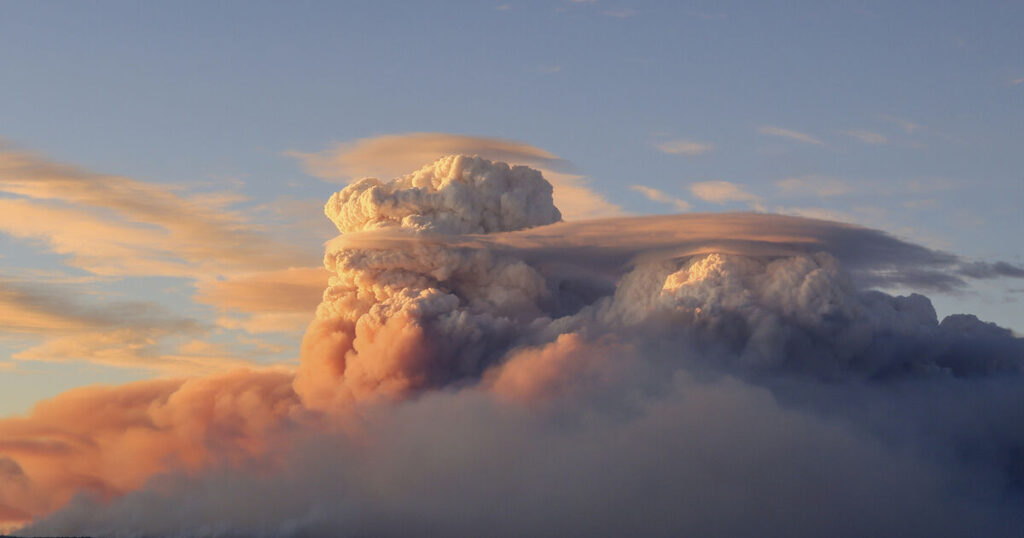Two wildfires burning in the western United States – including one that has become a “megafire” on the North Rim of the Grand Canyon – are so hot that they are spurring the formation of “fire clouds” that can create their own erratic weather systems.
In Arizona, the wind-whipped wildfire that destroyed the Grand Canyon Lodge is 9% contained and has charred more than 164 square miles to become the largest fire now burning in the continental US and one of the top 10 largest in recorded Arizona history.
Another large fire in Monroe, Utah, has burned 75 square miles since July 13 and is 11% contained, officials said on Thursday.
Evacuation orders were issued on Wednesday for several towns in the fire’s path, and scorched power poles caused electricity to be shut off in other nearby communities in south-central Utah.
Utah governor Spencer Cox declared an emergency on Thursday as wildfires grew around the state and planned to visit Monroe on Friday.
Towering convection clouds known as pyrocumulus clouds have been spotted over Arizona’s blaze for seven consecutive days, fuelling the fire with dry, powerful winds, fire information officer Lisa Jennings said.
They form when air over the fire becomes superheated and rises in a large smoke column. The giant billowing clouds can be seen for hundreds of miles and can resemble an anvil.
An even greater threat, fire-fuelled thunderstorm known as the pyrocumulonimbus cloud, sent rapid winds shooting in all directions this week as a smoke column formed from the Utah fire then collapsed on itself, fire team information officer Jess Clark said.
“If they get high enough, they can also create downdrafts, and that’s something we really watch out for because that can quickly spread the fire and can be very dangerous for firefighters who are doing their work on the ground,” Ms Jennings said.
The National Interagency Fire Centre said on Thursday that even with fewer square miles having burned so far this year than average, many parts of the country remain vulnerable to new starts and fast-moving flames.


